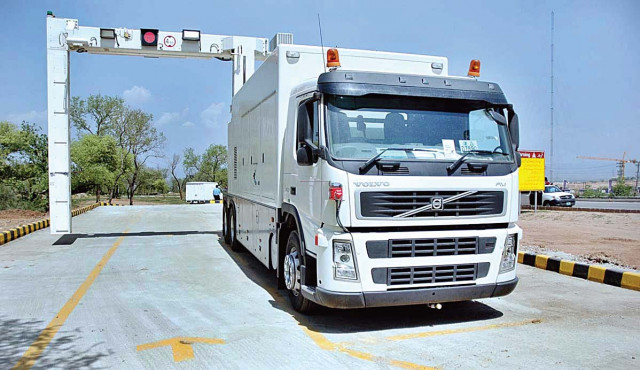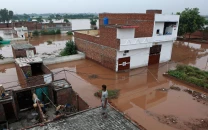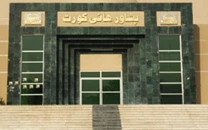Empty words: Technology that doesn’t exist, security that isn’t real
The burden of security on human resources in Islamabad is more than ever.

Newer strategies coupled with the introduction of modern technology in the past three years have reduced the burden of responsibility of security in Islamabad on human resources by reducing their involvement.
This was claimed by Interior Minister Rehman Malik in response to a question in the National Assembly on Friday.
He noted the procurement and subsequent deployment of scanners that detect explosives at the city’s entry points, the introduction of an Access Control System and installation of CCTV cameras at different places by police under the Safe City Project are some of the steps where technology had replaced people.
Some police officials, however, speaking on condition of anonymity, denied the minister’s claims.
“A majority of such steps are present on paper only. Those that did materialise are either not working properly or were outright failures,” said a police official.
The scanners were a particular focus of criticism. Sources in the police said that only one of the two scanners was working at Rawat entry point, while the other, which was supposed to be deployed at Golra entry point has been standing idle at Police Lines Headquarters for months.
“The authority responsible for providing fuel and maintenance for the scanners refused to take the burden, and police did not have the resources to bear the expenses,” said a police official. The officials who spoke to The Express Tribune wondered if the scanners were at all effective.
‘The idea was to check vehicles laden with explosives and weapons and protect the city against car bombs, but I doubt that these scanners can detect explosives beyond a limited range,” said a police official.
Moreover, it is practically impossible to check all vehicles entering the city through these scanners. A majority of police officials were convinced that the so-called “explosives scanners” were nothing more than mere cargo scanners.
Malik also claimed that the police were installing close circuit (CCTV) cameras at different places in the city under the Safe City Project and after its completion the police deployment will be reduced.
However, police sources said that not a single such CCTV had been installed yet. “A plan to install CCTV at some points was under consideration but it never went anywhere as the authorities were unwilling to bear the project cost,” said a police official.
Many police officials were clueless about the nature of the Access Control System, which the minister claimed had been introduced at the Supreme Court building and other points. When told such system allows access to a person on recognising his identity through fingerprints or ID cards, the police officials said it was still in the pipeline.
Besides introducing new technology, the minister claimed that the use of canine unit by the police, withdrawal of excess deployments, dual role of traffic police mobiles, the establishment of
e-enablement project, erection of boundary walls around police stations, review of pickets and use of cemented blocks had reduced human involvement in security arrangements.
On the contrary, police officials maintained they were facing an acute shortage of personnel for operations. They said most of the police personnel are attached to the security division and are responsible for the security of key government installations and officials.
One wonders if this was the answer the Member of the Parliament Kashmala Tariq wanted from the interior minister.
The fact that Tariq is one of the politicians facing threats from militants gives some idea as to what information she was looking for, particularly after the assassination of Punjab Governor Salmaan Taseer by a member of his security detail.
Published in The Express Tribune, April 18th, 2011.



















COMMENTS
Comments are moderated and generally will be posted if they are on-topic and not abusive.
For more information, please see our Comments FAQ